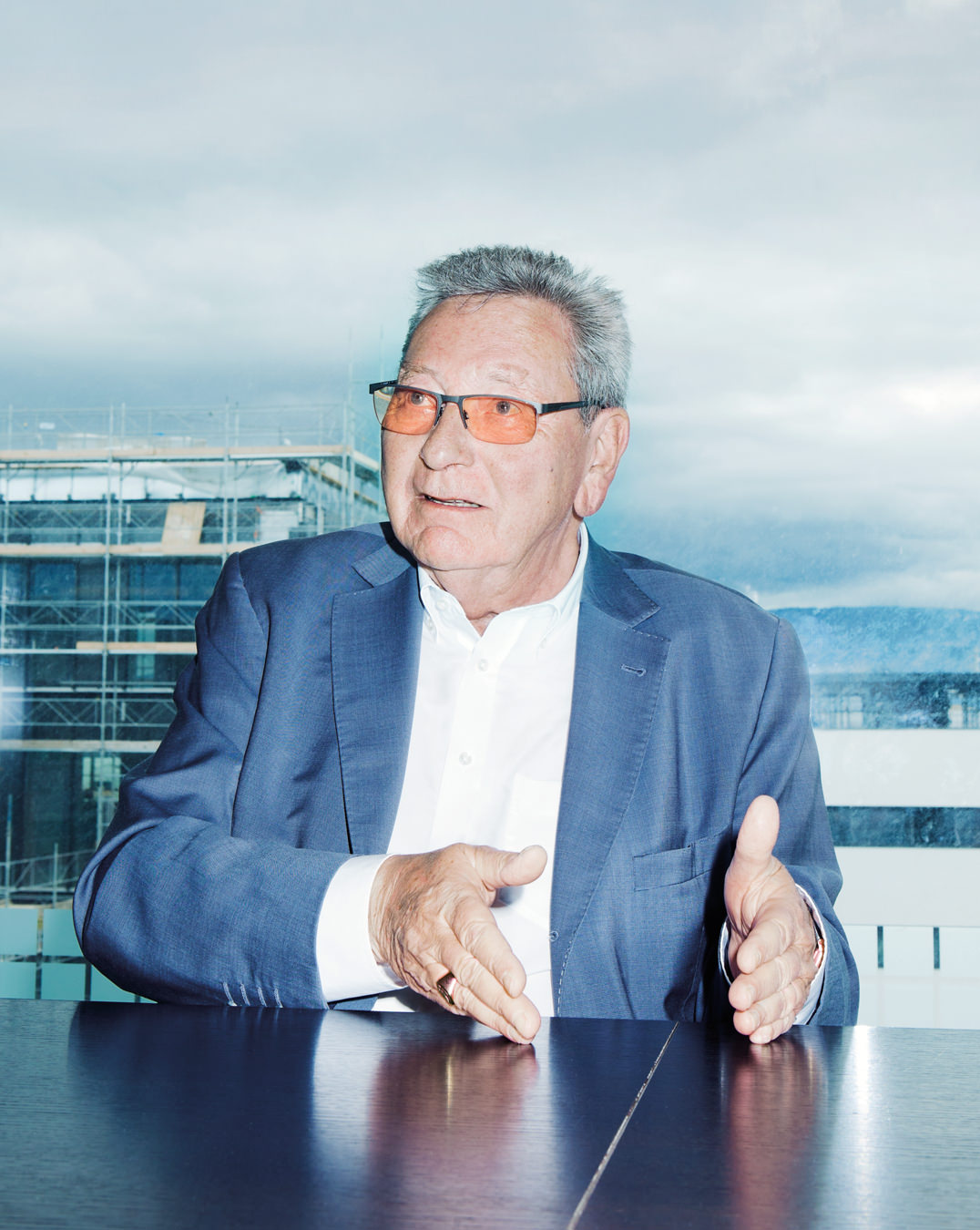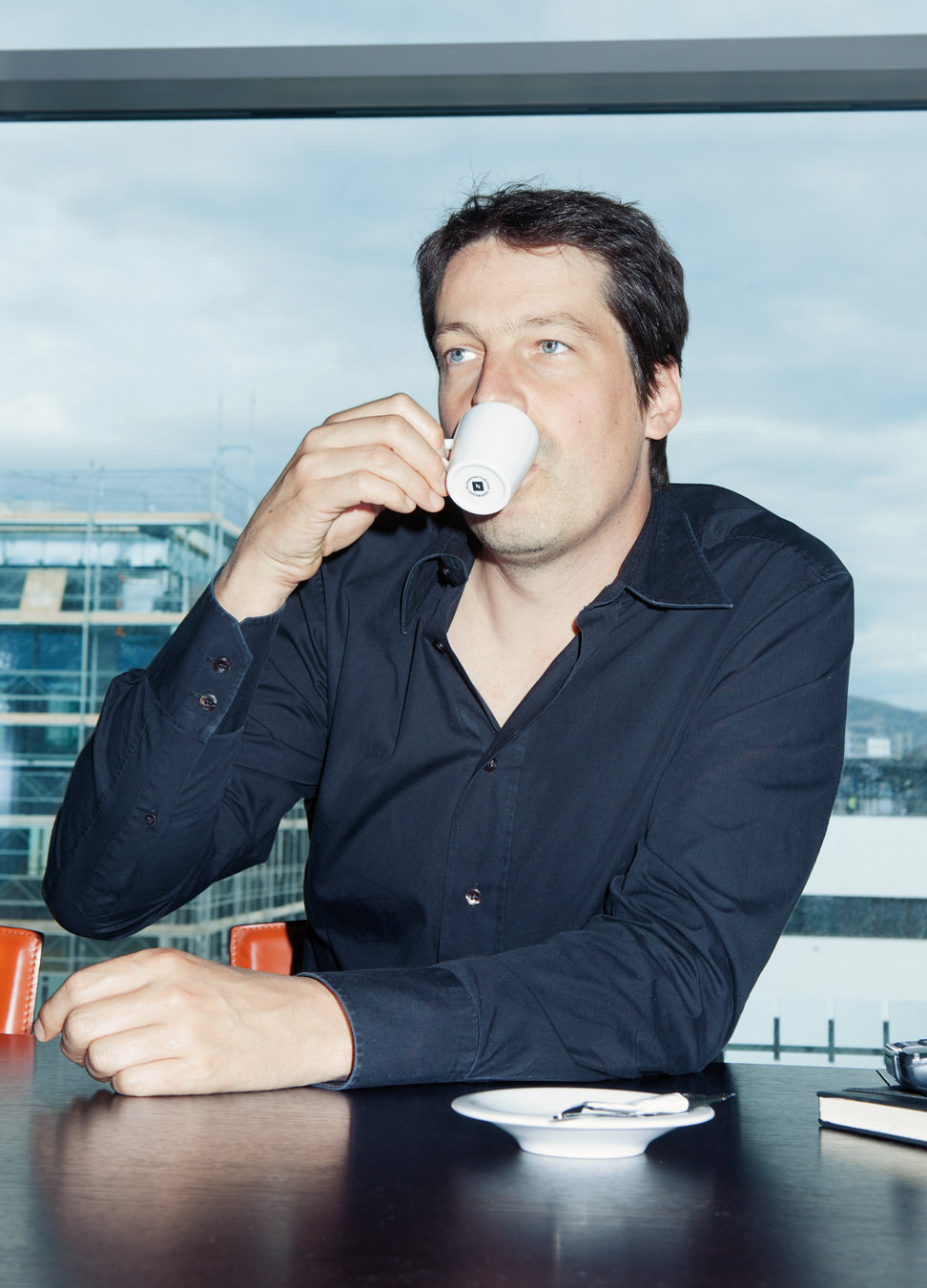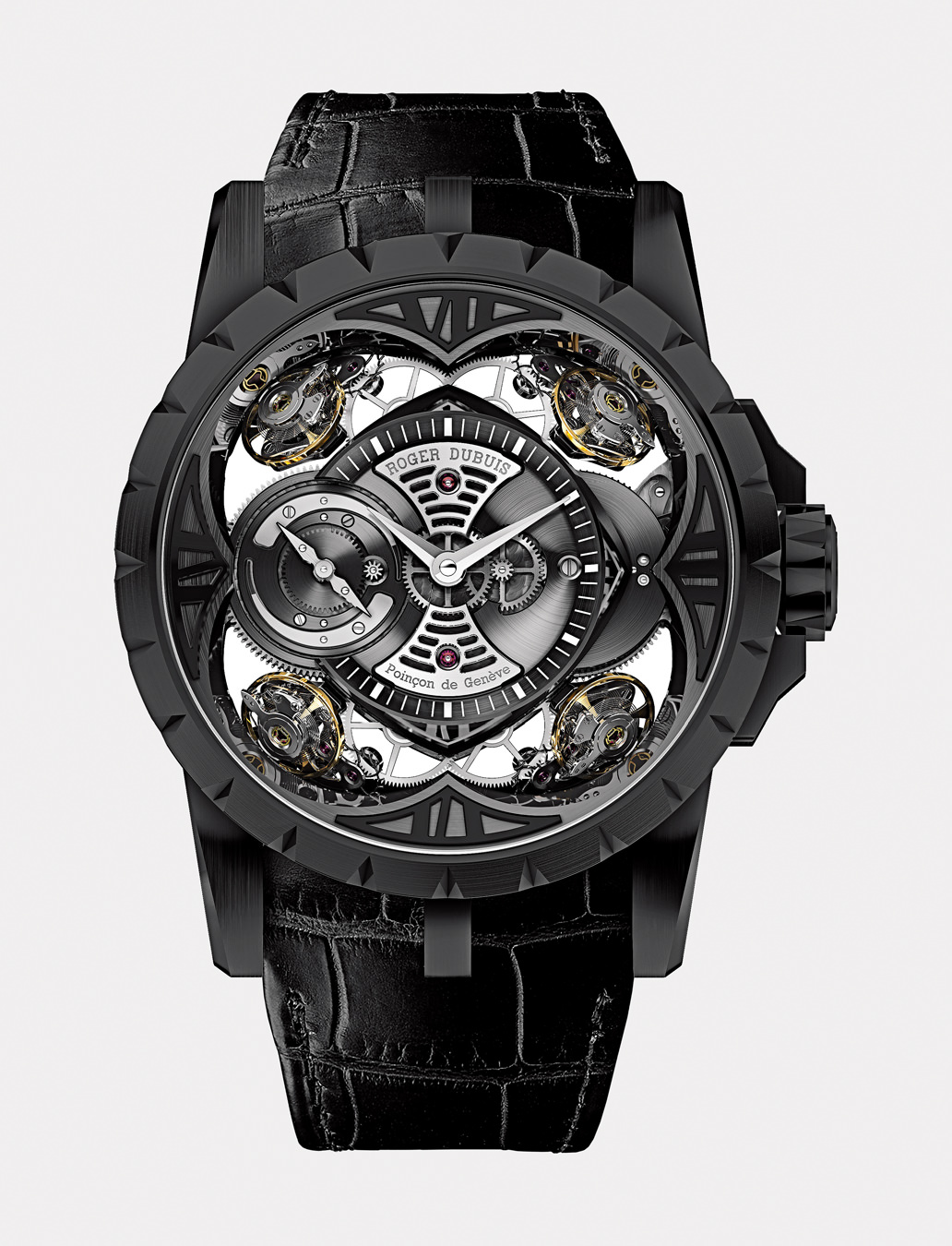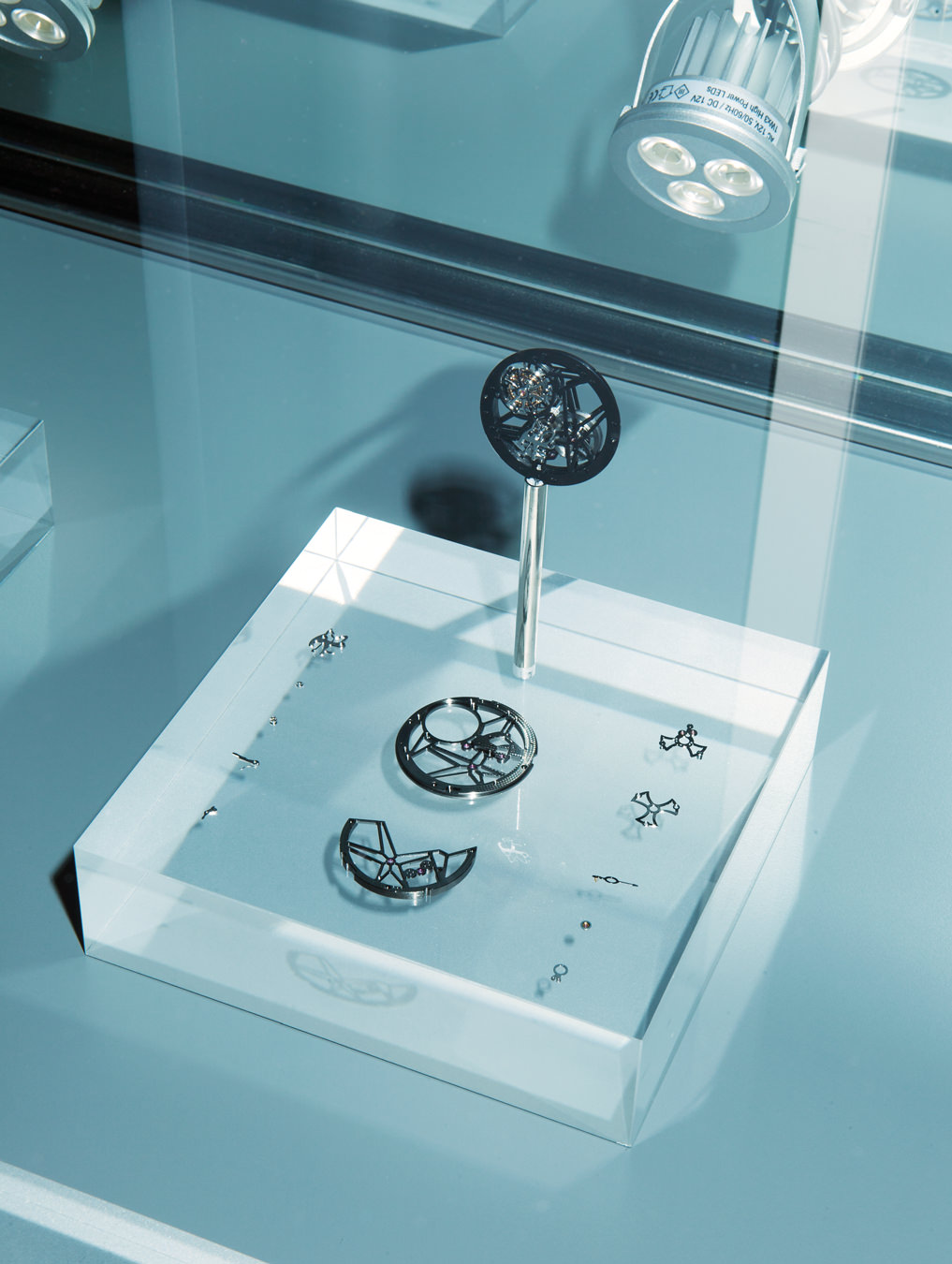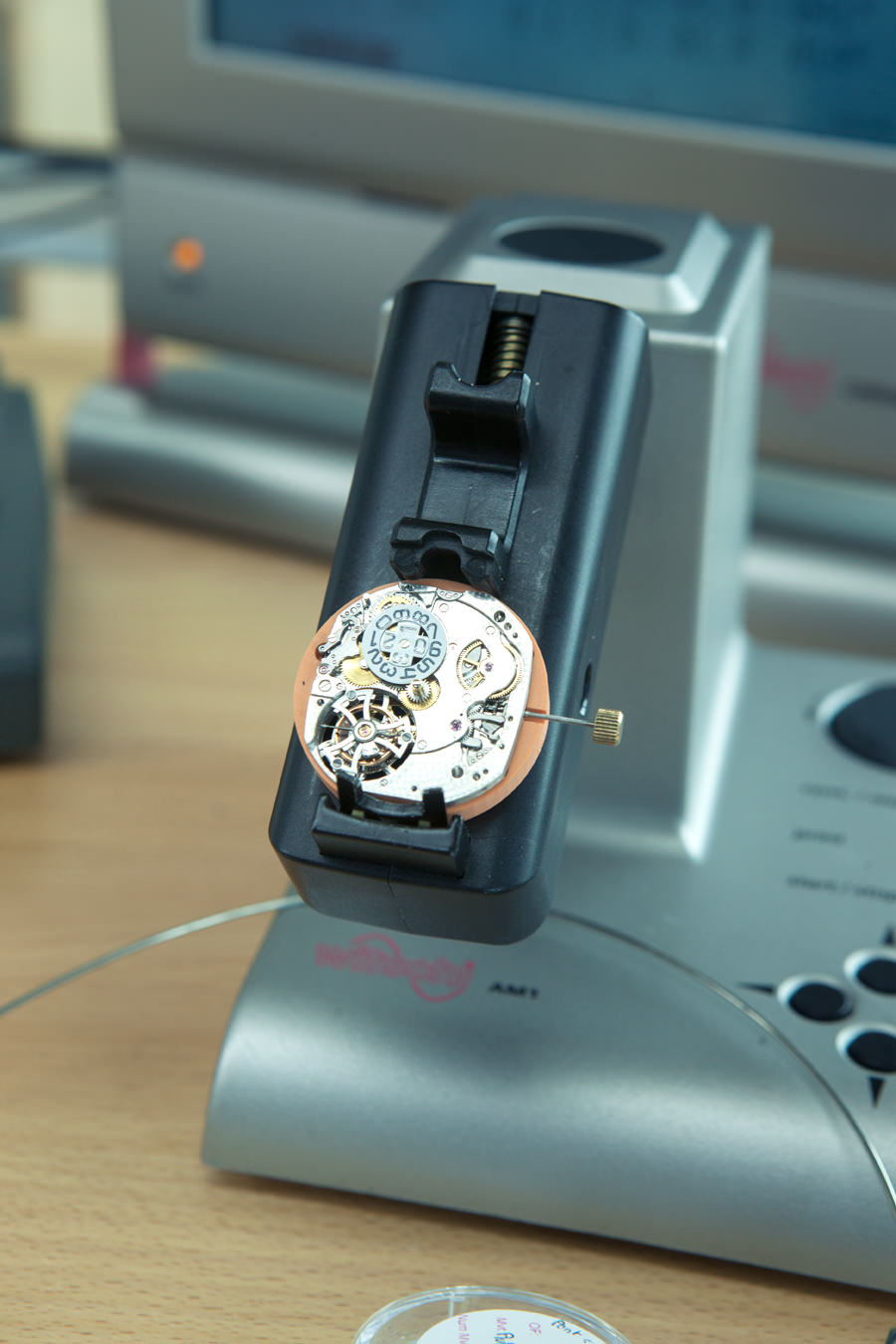Traffic in Geneva at 7:30 on a Wednesday morning is, by the standard of yesterday evening’s mosh pit, quite light. But at the reception vestibule at the Roger Dubuis manufacture, it is a buzzing hive of activity. The facility, state of the art and the only watch company that is 100 per cent Poinçon de Genève certified—which in the simplest terms means every single component of each and every watch they make is created right on premises—sits across the street from the Richemont Group’s new watchmaking campus, and is a model of efficiency and design prowess, much like the founder of the company, Dubuis himself.
He built his formidable reputation on an uncanny, highly focused, and sought-after ability to restore antique watches to their original glory. To do that, Dubuis insisted on using only the watchmaking instruments and parts that were available to the artisans who made the piece in the first place. It was painstaking, highly detailed work, and involved a certain instinctual capability. His reputation grew to such a level that he was perhaps the most sought-after watchmaker in Switzerland, with companies such as Patek Philippe courting him for many years. He did in fact join Patek, for a 14-year tenure, restoring highly complicated watches.
Eventually, his desire to form his own company arrived at a juncture with opportunity, and the eponymous brand was launched in 1995. He speaks crisply, directly, and affirms his belief that, at the Roger Dubuis manufacture, “we call our people technicians, but really they are artists.” This is at the heart of the entire enterprise, and reveals the not-so-secret formula for his manifestly successful career. He melds the extreme demands of technical know-how with an artist’s instincts and feel.
For Dubuis, “Breguet was a massive influence as I began, because of their creative spirit,” he says. “I am not a rebel, but a classicist.” This is not a simple process of repeating past glories, however: “Breguet was about respect for horology. By always keeping classic watchmaking in mind, enhanced creativity can occur.” He pauses, savouring this seeming contradiction. “I rely often on the creativity of others, of course,” he says. “It is a natural progression, to explore new ideas, using classic techniques as your basis.” This is not done simply as a vanity project, either. “I knew from the first instance, in starting the brand, that it had to be a conversation between the watch and the wearer. Our watches must evoke emotion. We are not selling time, not at all. ”
“Our watches must evoke emotion. We are not selling time, not at all.”
Dubuis earned his reputation by taking a minutely detailed, meticulous path towards an aesthetic ideal. “The old watchmakers used to sign each watch they made. I would go to the library and study these people,” he says. “It was like taking a literal trip back in time, so to speak.” The passion for his craft burns brightly. “I remember a piece, unique, a pocket watch, a grand complication watch from the late 19th century,” says Dubuis. “I undertook the restoration in 1999, and it took me a full two years to complete, and all 100 per cent Poinçon compatible.”
The Federation of the Swiss Watch Industry is painstakingly careful about terminology, about provenance, about authenticity. When Dubuis set out to make his manufacture 100 per cent Poinçon compatible, that meant his company had to make literally every single piece of the watch on their own premises. First introduced by the Republic and Canton of Geneva in 1886, as the ultimate signifier of watchmaking excellence, to this day it controls precisely what parts of the watchmaking process must be done in Geneva and environs, in order to qualify. At the very highest levels, the higher the percentage of the watch achieving Poinçon compliance, the greater the amount of the actual watch must be manufactured and assembled in-house. To be 100 per cent compliant simply means the Roger Dubuis brand makes and assembles every single part of the watch in its own manufacture.
Dubuis was instrumental in bringing the entire watchmaking community out of a crisis, which came to a head in the 1970s. “It was indeed a crisis,” he says, matter-of-fact. “There was a real danger that we could lose the knowledge of fine watchmaking. In earlier times, when precision tools did not really exist as they do today, watchmakers kept their secrets strictly to themselves. But we started a foundation, a kind of watchmaking patrimony, and encouraged older watchmakers to come together, teach younger, emerging watchmakers. It was at first a slow process. In my career, in my life, I have encountered many talented people. Now, as time passes, we discover more talent.” In fact, Dubuis chose mainly young watchmakers when he launched his company in order to push the boundaries of fine watchmaking further ahead.
Dubuis continues his thoughtful ways to this day. “Just in the last 20 years, there has been an explosion of excellence,” he says. “But, we are obliged to continue research, to fully understand the magnitude of previous achievements in less technically advanced times.” This brings up the name of Gregory Bruttin, the company’s product strategy director. “Gregory is part of a new mindset. But what I admire about him most is he taught himself so much, learned so much from others,” says Dubuis. That is an acute point; Bruttin is a classically trained watchmaker who went on to take an engineering degree, and then on to complete training in watch construction, the most technical of areas.
“It is a natural progression, to explore new ideas, using classic techniques as your basis.”
Dubuis knows there is always a confluence of creativity and technology, but the emotions that drive a person to actually purchase a rare timepiece are in fact similar to the emotions that go in to making that piece in the first place. “Perfection in a watch does not exist,” he says, and Bruttin nods in agreement. “There is always one little step further you can go.” Bruttin adds, “There is an emotional journey in making a watch, an investment. That means I spend significant time with our young watchmakers. They may not have the skill set of Roger, of course, but we need them to have the passion, along with high skills.”
This can lead sometimes in fascinating directions, such as when Bruttin showed Dubuis his blueprint plans for a watch he called the Quatuor. He smiles in recollecting the moment: “Roger looked at it, then looked at me. ‘You are crazy,’ is what he said, and then, ‘But let’s go!’” Bruttin smiles again. “We have a lot of stories about the Quatuor, but one of my favourites is that when we began the prototype process, a group of analysts came in. Their study and recommendations came back a few months later, and basically they said it was impossible to make such a watch. The thing was, when the recommendation hit Roger’s desk, I had already completed the watch, which he showed to them. It was quite a moment. They found it very difficult to believe, but there it was. It speaks to what we are trying to do, which is always reach that little bit further.” This is technology at a highly evolved level. The challenge Bruttin had set for himself was based on the fact that the precision of a watch’s movement is affected by gravity. The watch also constantly changes position with the motion of the wrist. The tourbillon, invented by Abraham-Louis Breguet over two centuries ago, provides a partial answer to this problem, but the Excalibur Quatuor offers a new solution. Four carefully positioned sprung balances work in pairs to compensate immediately for the rate variations caused by changes in position. What the tourbillon achieves over the course of a minute, the Excalibur Quatuor achieves instantly. It is a remarkable accomplishment.
Even a casual stroll through the watchmaking labs at the manufacture reveal a team fully embracing the culture of excellence—of attention to the tiniest detail—that Dubuis himself represents. There is a prototype lab, with almost a top-secret air about it, no cameras, certainly, and no media without Bruttin giving the green light. But inside, a watchmaker is working his way through to completion of a new high-complications watch that Bruttin says will “make some heads turn when it is done”. The truth is, that can be said for virtually every piece produced here. The Excalibur Quatuor Skeleton, for example, features King Arthur and his Knights of the Round Table, each handmade and placed as part of the dial settings. Even a more basic, less complicated Roger Dubuis watch belies its DNA, its history reaching back to the 18th century and Breguet, winding through the restoration expertise of Dubuis himself, and now on into the 21st century, where, with Bruttin, Dubuis says, “We have discovered a new mindset. The future has never looked better.”
Like this story? Sign up for our weekly newsletter to get more great content delivered right to your inbox.

